Hi all,
I have to admit this is probably my favourite block in the whole quilt….
This block does look a little scary but if you take your time I am sure it will work for you. And you only need to make one!
We are going to be using templates, doing Y seams and curves for this one. Because of the size of the finished block – 20”, the curves are quite large and gentle. There are a couple of key points to remember when doing the Y seams and I will go through them with you….this is a very photo heavy post because I wanted to try to be clear with the instructions.
Templates
You will need to download the templates from here.
Remember to print them with NO page scaling.
Note. Ignore the unit numbering, I tried various ways of editing the templates but my first attempt at this block did not work so I have resorted to printing the templates straight from EQ7 as a PDF. And my second block is almost perfect.
You will need to join the large centre template. You will see that each page has a dotted line running down each side. To join the template cut along the dotted line on one of the pages (in the picture above I have cut along the dotted line on the right-hand page).
Align the cut edge with the dotted line on the joining page, make sure the lines for the template match up to make a smooth curve. Sticky tape in place.
Cut carefully around the outside line on all the templates.
You should have one of each of the templates above (these ones are numbered differently to the real templates that you are using).
There are several ways of making templates. I have just used the paper templates and cut around them as you would with a dress pattern. If you don’t want to do it how I have you could trace your templates onto template plastic, cut out the shapes and then you trace around the edge of the plastic onto the fabric. Or you can glue your paper templates onto cardboard, cut around the shapes and trace around the edge of the card onto your fabric. But we are only making one block, if you use nice sharp scissors (I use dress-making shears) and use a rotary cutter and ruler for the straight lines you shouldn’t have too much trouble cutting the templates the way I have.
Cutting your fabric
Okay, I know the above picture contains a lot of information…
Grainline – trying to cut your pieces with the grainline following the lines that I have “Use this line” written on will help to stop your block stretching around the edges. There are 2 shapes that I haven’t marked with a grainline, you may want to fussy cut these or just place the large floral fabric template square on your fabric and line up one of the long edges of the Flower diamond with the grain.
Cutting requirements – If you follow the picture and lay your pieces out as you cut them, it will be easier for you to see what you have cut and keep track of the pieces.
Iron your fabric to make sure it is flat. Pin the template to the fabric, it is a good idea to use a few pins as you want the template to stay flat on your fabric and not bulge up as you cut.
Cut carefully around the edge of the template, sticking very closely to the template edge. Note in the photo above that you can’t see very much fabric at all around the edge.
When cutting the templates that require more than one piece make sure all the layers of fabric are facing up.
For example – If you leave your fabric folded over wrong sides together, like we usually do, one out of two pieces will be facing the wrong way.
When cutting the petals I cut 4 pieces of fabric bigger than the template, layered them together right sides up and pinned the template on so that the grainline followed the strip in the print.
Piecing Unit A
Starting with a diamond flower and a petal. With the petal piece if you fold the template in half you will notice that one of the straight edges is longer than the other one. The short side butts up to the backing fabric and the longer side butts up to the flower diamond.
Flip the petal onto the diamond, align the edges from the bottom point of the diamond. It is very important not stitch all the way to the edge on the end were the Y seam will be. Stop or start your stitching 1/4” in from the edge. And sew with an accurate 1/4” seam allowance.
Finger press (I didn’t use my iron until the unit was complete) the seam over to the petal. And get your next piece ready.
Attach this petal in the same way as the other petal. Remember to stop sewing 1/4” from the end where the Y seam will be.
Finger press the seam over to the petal side. And get your next piece ready.
Flip the background fabric over onto the flower diamond. Align the top points, at the bottom where the Y seam will be the background fabric should sit 1/4” over the existing seam. Stop/start sewing from this seam line, don’t sew over the seam line. Also be careful not to catch the existing seam allowance in your stitching.
This is what it should look like after the seam is sewn. The background and petal fabric should overlap about a 1/2”.
Fold the whole unit over and align the edge of the petal with the background edge.
Make sure that both of the existing seam allowances are out of the way of where your new seam line will be.
Stop/start your stitching from the existing seam lines. None of the 3 seams that meet at the Y seam should be sewn all the way to the edge. You will understand why when you get to the pressing stage.
Repeat the process for the background piece on the other side of the diamond.
Flip the background fabric onto the flower, align the top points and have 1/4” over the seam at the bottom. Don’t sew over the existing seam.
The background and petal fabric should overlap.
Flip the whole unit over and align the edge of the petal fabric with the edge of the background fabric. Make sure your existing seams are back out of the way.
Open the unit out. It is now sewn together.
Carefully press, try not to push the fabric around with the iron. Place the unit wrong side up on the ironing board. Notice in the picture above that the seams rotate around the junction of the Y seam. Gently press the back first to get the seams going the right way, then flip it over and press from the front.
This is how the back of the Y seam looks after pressing. This helps reduce bulk and helps the seams to sit flat.
You need 4 of these units.
Piecing Unit B
These are the pieces you need for Unit B.
Find the centre of the curve on one side of the centre fabric and the centre of the curve on the background fabric. I fold the piece in half and mark the centre point with a pin.
Place you background fabric right side up and place the centre fabric on top with right sides together. Line up the centre points of the curves and pin.
Next, line up the ends of each piece and pin together. Then gently ease the top fabric into line with the fabric underneath and pin, my pins are roughly 3/4” – 1” apart.
Carefully carry over to your sewing machine, try to keep the bottom fabric flat and hold the top fabric gathered up. Holding it all in position makes it easier to sew. Slowly sew around the curve using 1/4” seam allowance, trying not to tug or pull at the fabric as you go.
Gently press the seam to the background fabric.
Repeat the process for the opposite side if the unit.
And then do the top and bottom.
You can see that there is starting to be a bit more bulk. Just gather it all in and keep pinning. Pins are your friend!
Press all the seams over to the background fabric. Your unit should sit nice and flat.
You now have a complete Unit B.
Piecing Unit C (the whole block)
Now we are joining the flowers (Unit A) to the centre of the block (Unit B).
Place the flower right side up. Place the centre fabric on top so they are right sides together. Line up the centre point of the flower, where the petals and flower all come together, with the point of the floral fabric on the centre unit. Pin together.
Line the edges up, keep the straight edges lined up. In the picture above you can see my edge pins have been put in to hold the edges straight together.
Gently ease the top fabric into position, and pin. Again my pins are about 3/4” – 1” apart.
Carefully carry over to your machine and slowly stitch around the curve. Be careful not to tug or pull on the fabric.
Gently press the seam over to the background fabric.
Repeat this process for all four corners.
You now have a complete Wandering Foot block! Yay! You can breath again LOL
This block should measure 20.5” unfinished.
If you have trouble understanding my instructions or have any questions please email me and I will do my best to help!

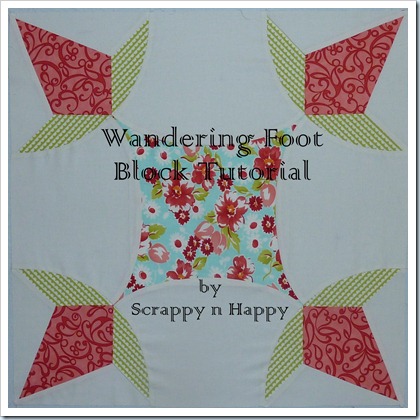
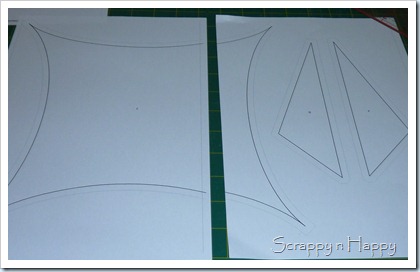


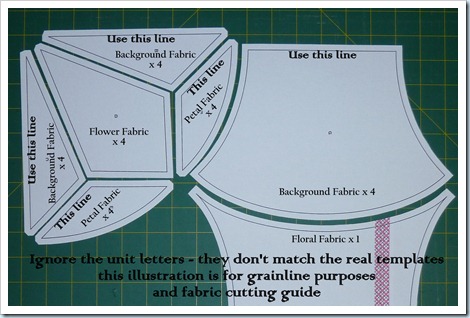
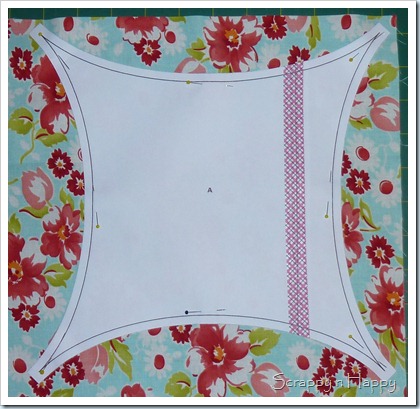
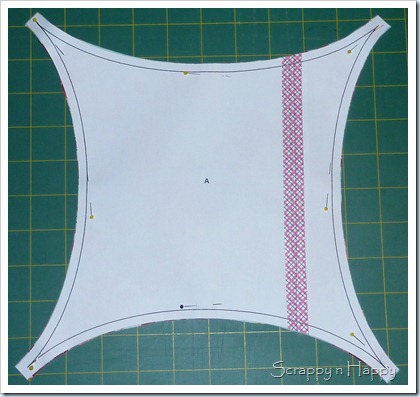
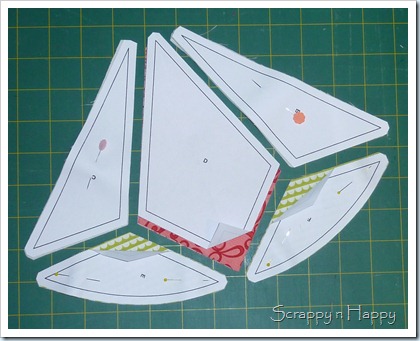
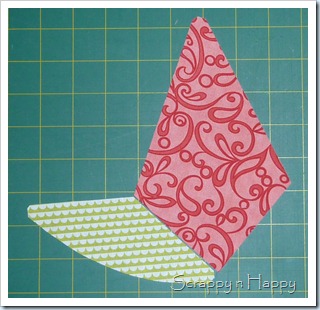
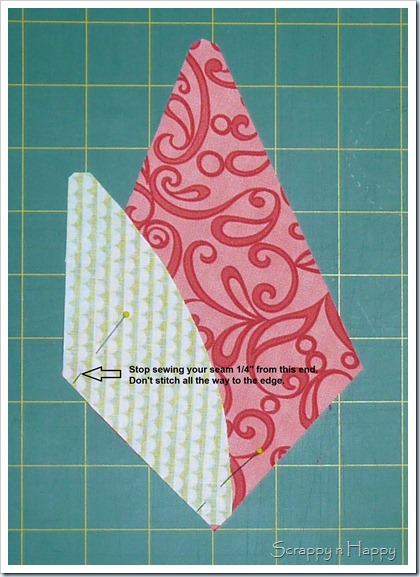
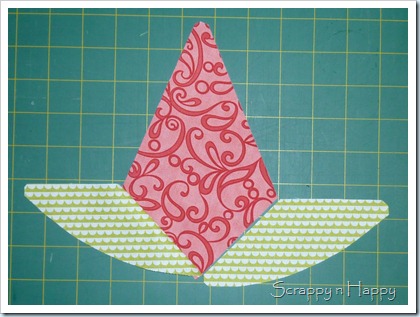
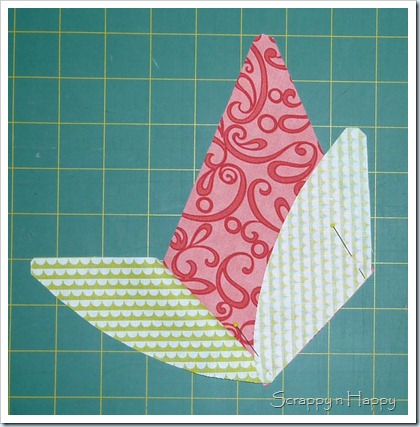
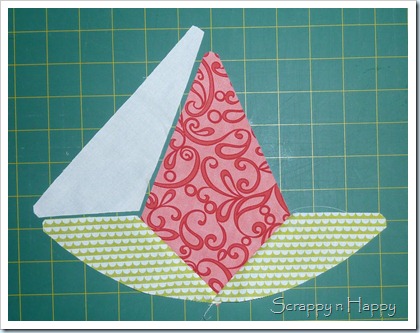
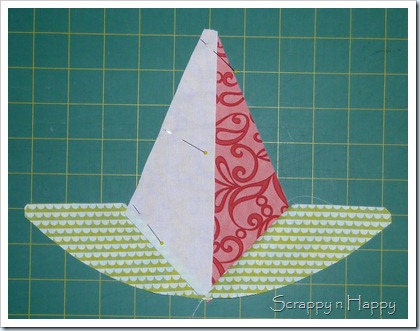
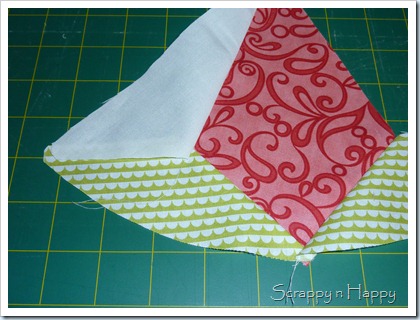
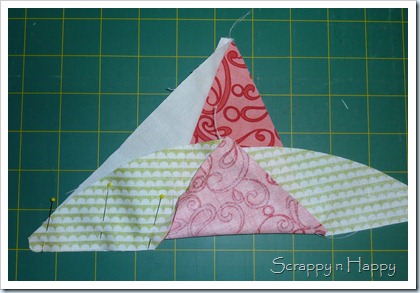
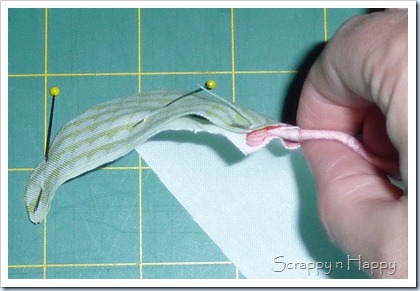
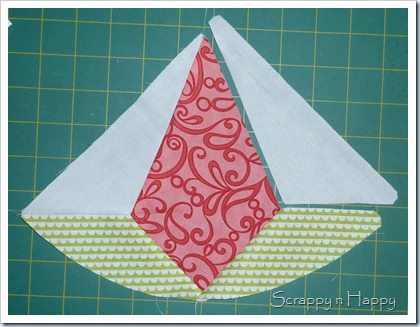
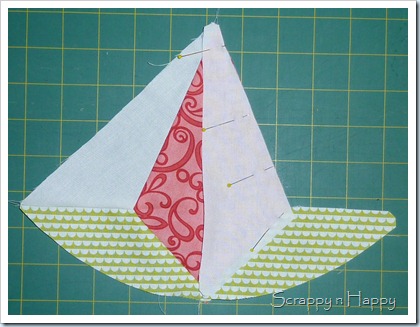
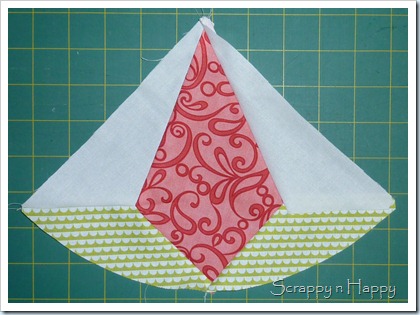
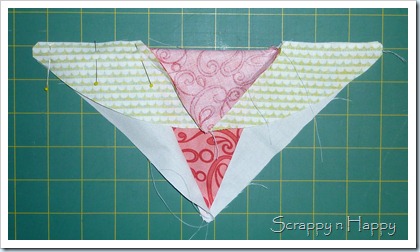
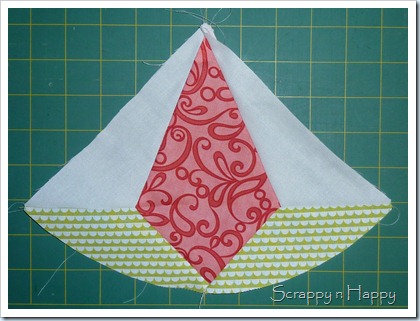
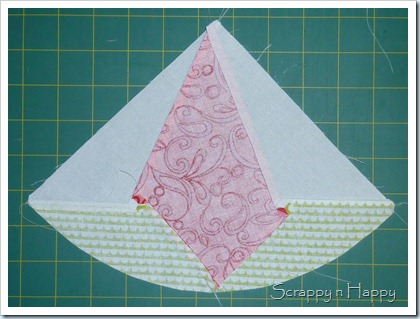
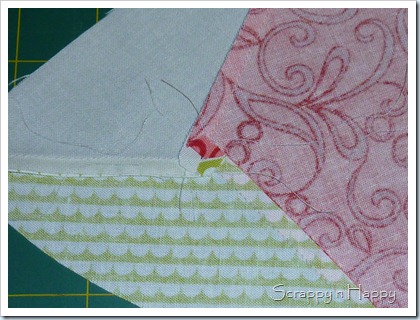
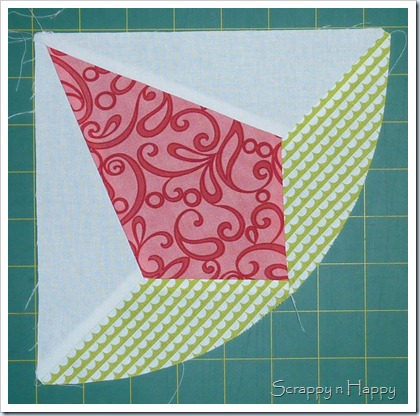
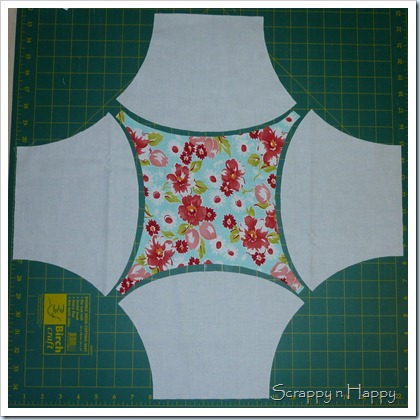
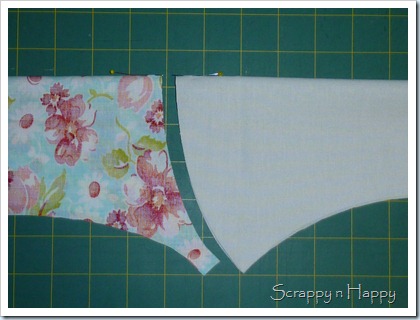
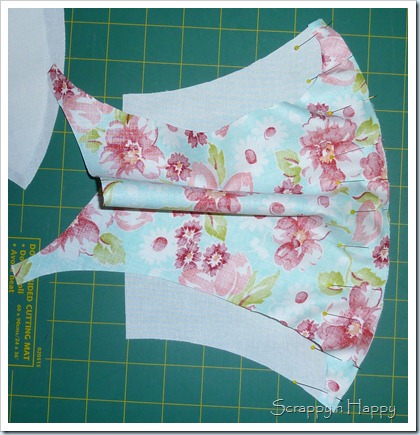

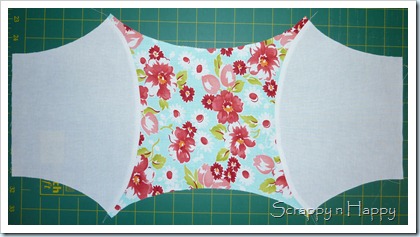
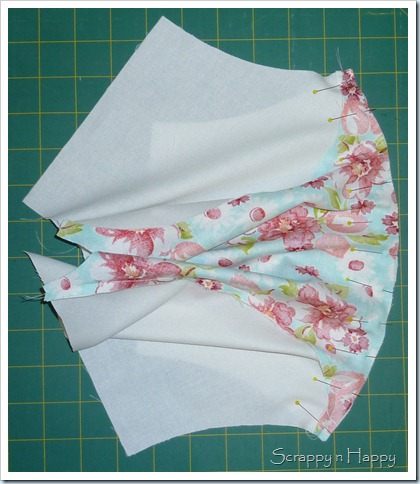


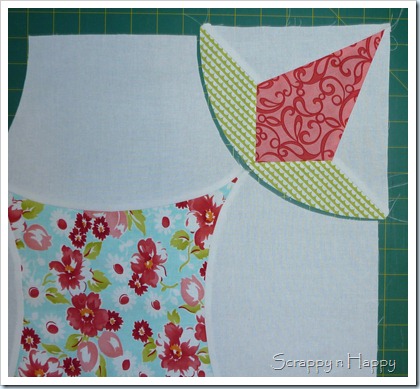
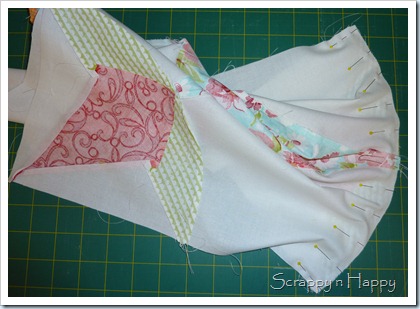
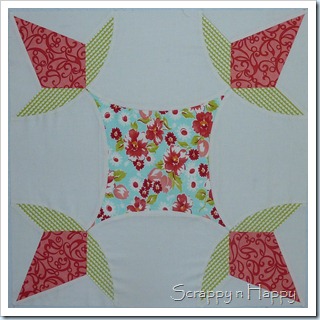

8 comments:
Wow, what a beautiful block! But not an easy one, that's for sure!
ohh..this is a pretty block,and I agree, it does look tricky!
Jess, this block is gorgeous. Thanks for all the pictures. When I make this block, I know they will help tremendously.
Oh my goodness Jess, it looks amazing! Scary but beautiful ;o)
Great block.I run when I see curves but now I have to do it.Poor me!!
This has been my favourite block since I first started quilting but have always been scared of it! While I am not doing you quilt along I am definitely going to make this block, maybe a whole quilt as you have made it look so easy.
Debbie – Jump Creations
I just made it Jess - really fab tutorial, it worked really well (not perfect, but close).
I've just found this tutorial and am having a little problem downloading the template - can you help me with that please? Looking forward to making this!
Post a Comment